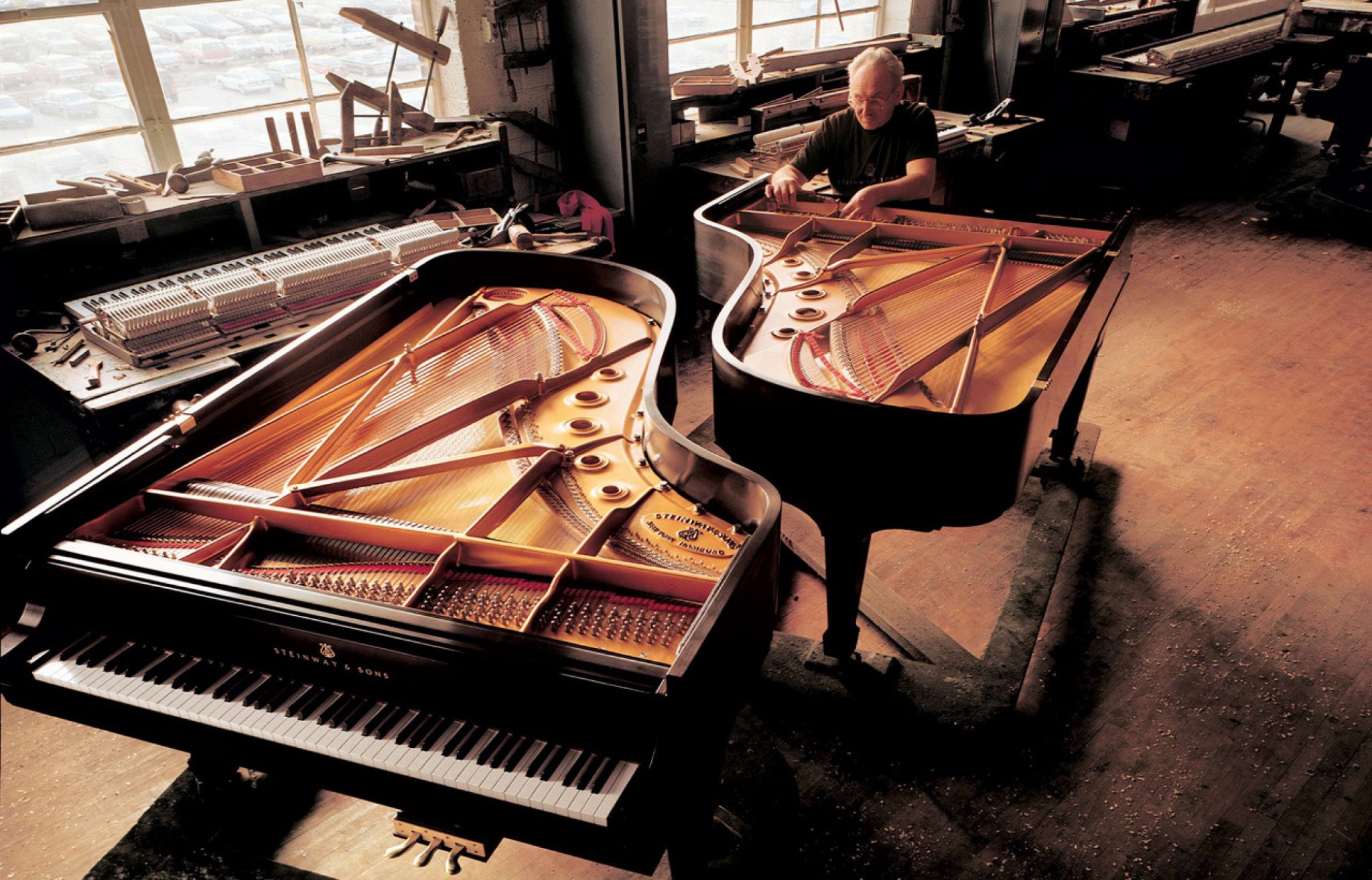

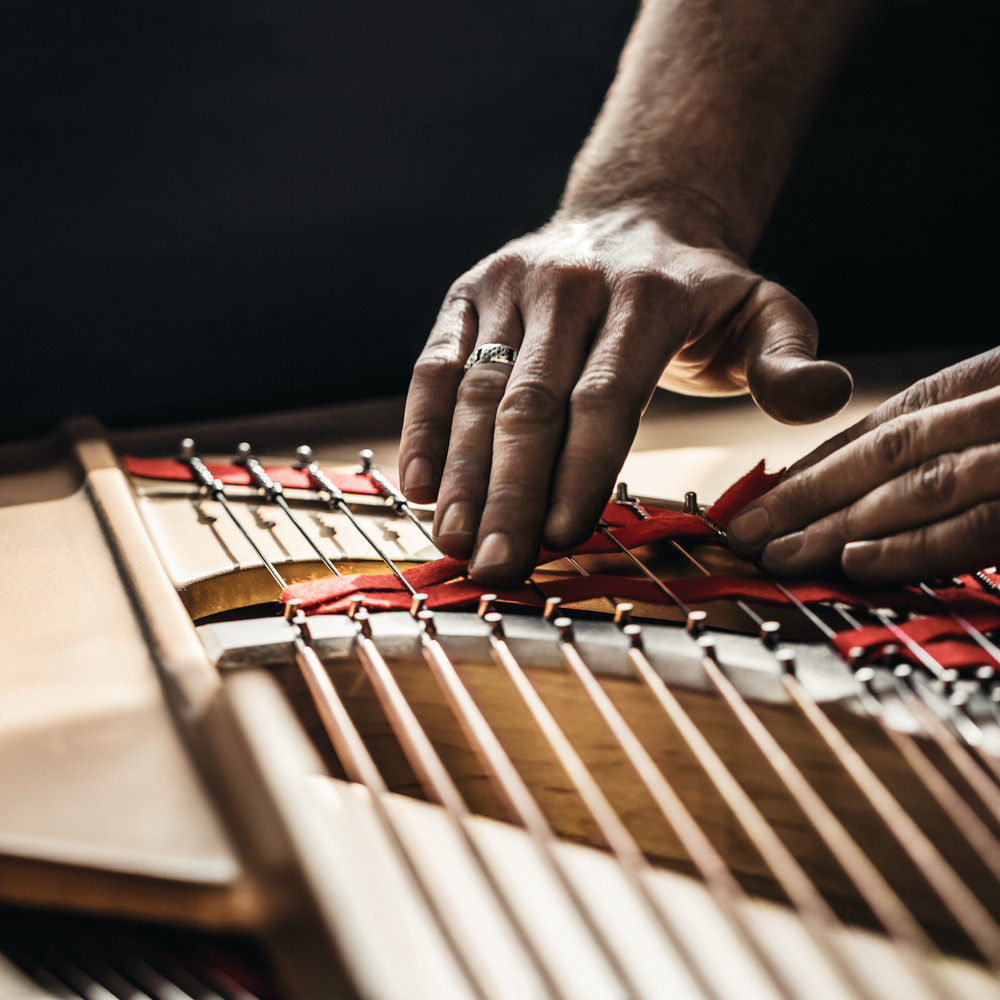
The pianos have steel strings in the midsection and treble, with bass strings made of copper-wound steel. The strings are uniformly spaced with one end coiled around the tuning pins, which in turn are inserted in a laminated wooden block called the pinblock or wrestplank. The tuning pins keep the strings tight and are held in place by friction. Steinway also employs front and rear duplex scales, in which the main vibrating section of the string is augmented by a much smaller vibration in the two ends of the string which are fastened in place. Steinway was a friend of the German physicist Hermann von Helmholtz, and this friendship led to the development and Steinway patent in 1872 of front and back aliquots, allowing the traditionally dead sections of strings to vibrate in sympathy with the main string. The result is a fuller, more complex sound.
The pinblock, also known as wrestplank, in Steinways is made of seven layers of hard-textured wood that are glued together, set at a 45° angle to the run of the grain. It is designed to keep the piano in tune longer.
>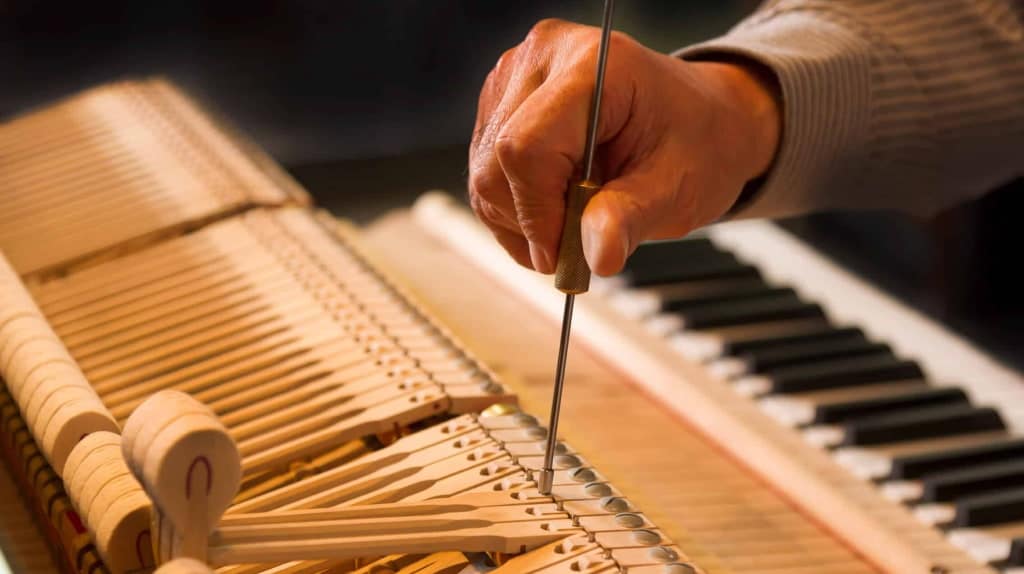
Steinway keys are made of Bavarian spruce. The surface of the white keys is made of polymer; earlier, they had been made of elephant ivory. Around the 1950s, Steinway switched from using ivory, and some years later use of ivory for piano keys was outlawed. The action parts are mounted on Steinway's tubular metallic frame. The Steinway hammers are cut from virgin wool felt, containing no admixture of other materials.
In 1962, the Queens Steinway factory introduced the Permafree action for its grand pianos, using Teflon parts in place of cloth bushings. The Teflon was intended to withstand wear and humidity changes better than cloth. The Teflon bushings resulted in certain unforeseen problems mainly during changes in weather; they were discontinued in 1983. The Hamburg Steinway factory never implemented the Teflon bushings in its pianos.
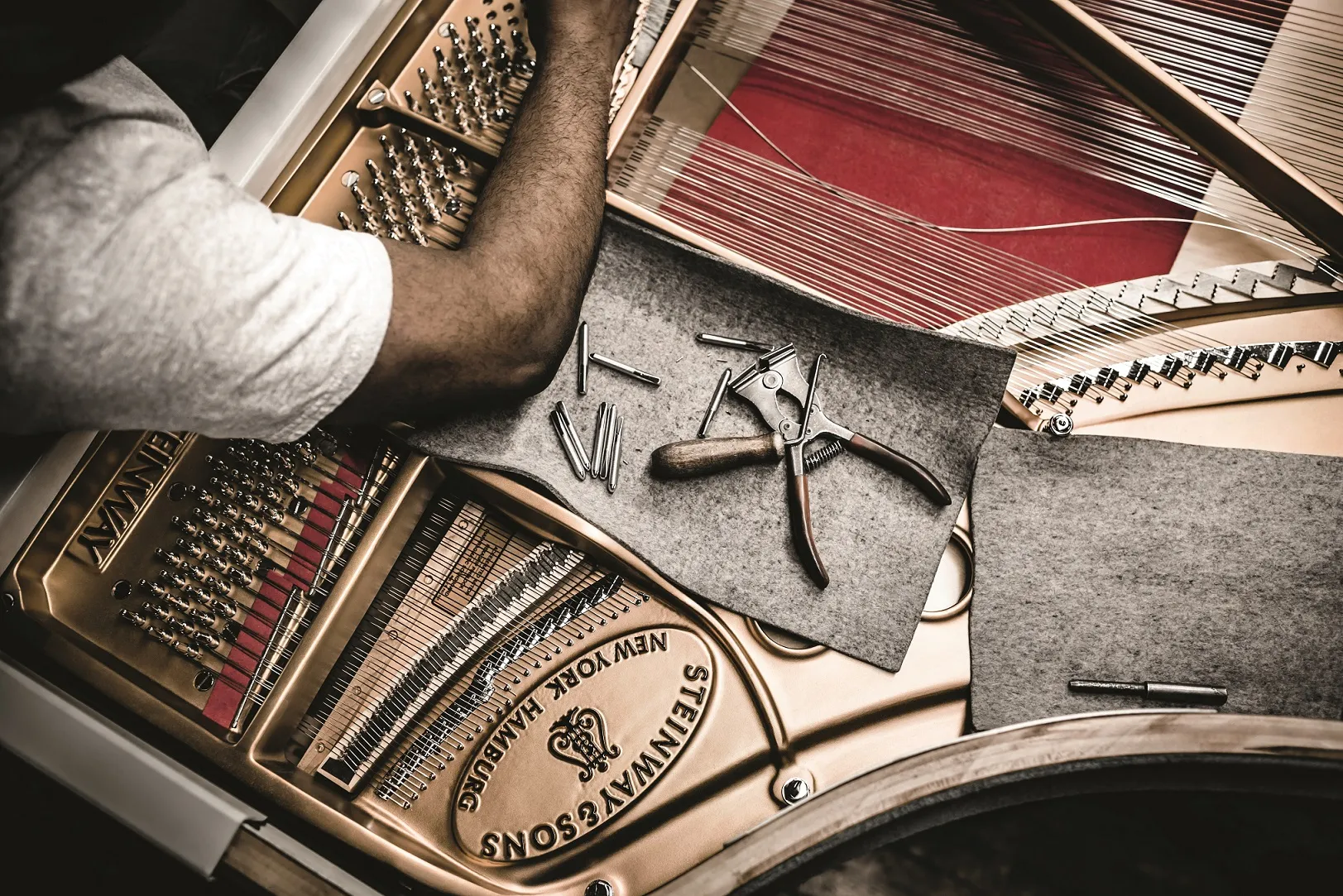
The rim of Hamburg-made Steinway pianos consists of layers of hard rock maple and mahogany and the rim of Queens-made Steinway pianos consists of layers of hard rock maple only. The layers are glued and pressed together into one piece in one operation using rim-bending presses that C. F. Theodore Steinway invented in 1880. After the rim-bending process, the rim has to rest from the stress of being bent. It is placed in a conditioning room for a month or more to reduce the moisture content of the wood to approximately six percent.
Inside the Steinway piano, a cast iron plate provides the strength to support the string tension from 16 tons up to 23 tons. The iron plate is installed above the soundboard and is bronzed, lacquered, polished, and decorated with the Steinway logo. Steinway fabricates plates in its own foundry.
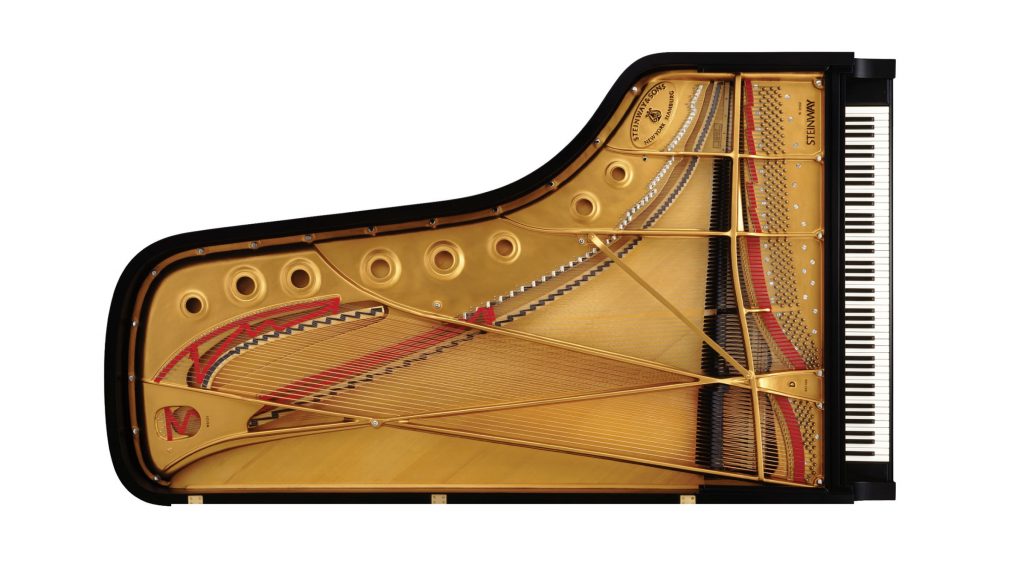
Steinway makes its soundboard from solid spruce, which allows the soundboard to transmit and amplify sound. The soundboard in Steinway pianos are double-crowned with Steinway's diaphragmatic design. The diaphragmatic soundboard, which was granted a patent in 1936, tapers in thickness from the center to the edges, which permits more freedom of movement resulting in a richer and more lasting tonal response.
Steinway bridges are made of vertically laminated hard rock maple with a hard rock maple cap. The bridges are measured for specific height requirements for each piano and are hand notched.